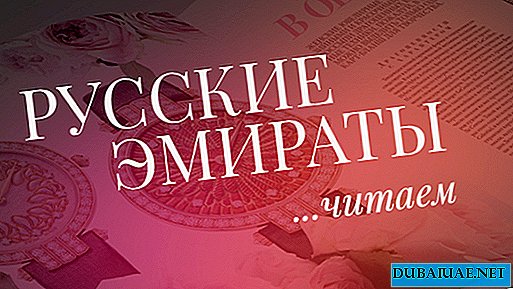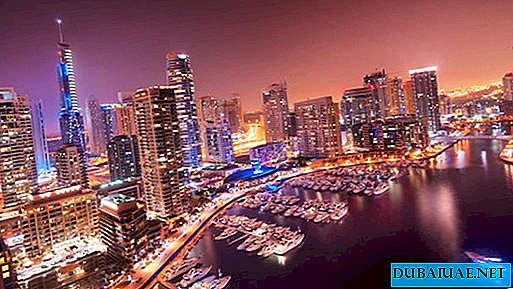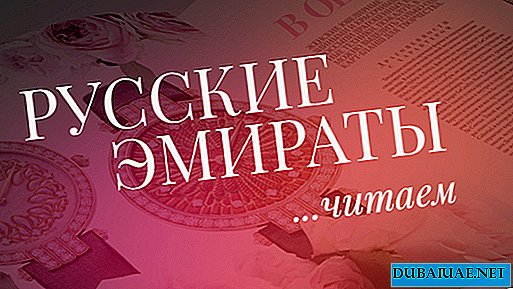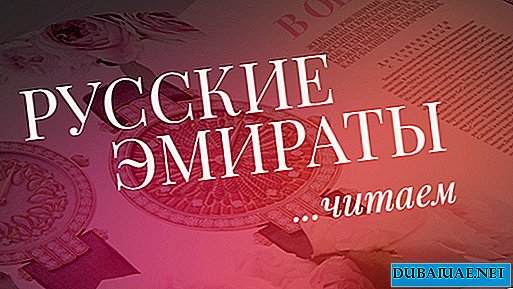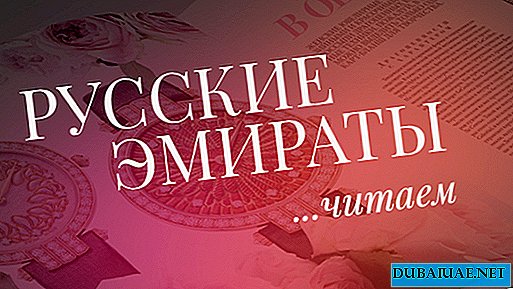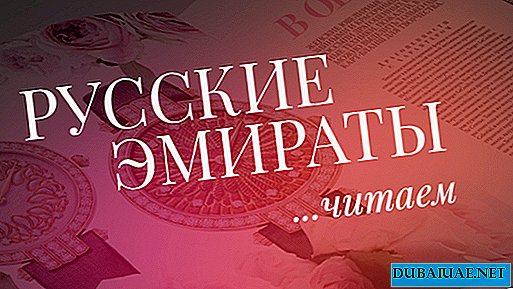EXHIBITIONS OF ARABIAN RACES HAVE HAPPENED IN THE SECOND HALF OF MARCH IMMEDIATELY IN THREE EMIRATES, INCLUDING IN THE STRUCTURE OF THE UAE - IN DUBAI, SHARJA AND ADJMAN. AS ALWAYS IN SIMILAR EVENTS, TONS ARE SET BY THE GOVERNORS OF THE EMIRATES, HEREDY PRINTS, MOST INFLUENTIAL SHEIKH AND LARGE LOCAL ENTREPRENEURS. THE BEST HORSE-BREEDERS FROM OTHER ARABIAN COUNTRIES, THE OWNER OF SEVERAL EUROPEAN STABLES, WERE BORN TO THE UAE.
 The prize fund of the Dubai exhibition was 4 million dirhams (about 1.1 million dollars). Europeans received some prizes. One of the most successful was the Saudi prince Khaled ibn Sultan Al Saud, who received a large number of awards. Prizes in different age categories were won by pets of the UAE President Sheikh Khalifa bin Zayed, Deputy Prime Minister Sheikh Sultan bin Zayed, Deputy Ruler of Dubai Sheikh Hamdan bin Rashid, son, grandson and even granddaughter of the ruler of Ajman Sheikh Amn. At equestrian festivals attended by thousands of Arabian guests, admirers of horses from European countries. During the exhibitions lotteries were held, the participants of which could count on a happy chance and the help of angels to get a horse for the price of a lottery ticket. Auctions were organized, giving the opportunity to buy a choice of one or more of two hundred horses.
The prize fund of the Dubai exhibition was 4 million dirhams (about 1.1 million dollars). Europeans received some prizes. One of the most successful was the Saudi prince Khaled ibn Sultan Al Saud, who received a large number of awards. Prizes in different age categories were won by pets of the UAE President Sheikh Khalifa bin Zayed, Deputy Prime Minister Sheikh Sultan bin Zayed, Deputy Ruler of Dubai Sheikh Hamdan bin Rashid, son, grandson and even granddaughter of the ruler of Ajman Sheikh Amn. At equestrian festivals attended by thousands of Arabian guests, admirers of horses from European countries. During the exhibitions lotteries were held, the participants of which could count on a happy chance and the help of angels to get a horse for the price of a lottery ticket. Auctions were organized, giving the opportunity to buy a choice of one or more of two hundred horses.
It is no coincidence that exhibitions are held in several emirates at once. It is not easy to deliver your beloved horse to the competition, therefore horse breeders use the opportunity to show their handsome men at several shows. In the Dubai exhibition, for example, nearly 250 horses took part, including from Italy, France, Belgium, Sweden, Switzerland, the USA and Brazil. Many of them also showed off in Ajman and Sharjah, where they also did not remain without awards.
Dubai sets the tone at these shows. In Sharjah showed their become less than 180 horses. In Ajman, where Crown Prince Ammar is the main court stable, there were more than 100 of them. According to the local press, the ruling Dubai family Al Maktoum keeps about 600 horses in the country and in British and French stables, which are the decoration of the races. They are, of course, not only the "Arabians". A great lover of horses is the current ruler of the emirate, Sheikh Mohammed bin Rashid Al Maktoum, who is a prominent Arab poet. He has someone to sing in his poems, since the sheikh’s personal stables in the country and abroad contain hundreds of light-legged beauties who annually win many international competitions.
In his poem "Challenge", written in a local colloquial dialect, Sheikh Mohammed describes one of the competitions in which he emerged victorious.
I left with a victory, and everyone who disputed the honor,
Parted in peace. When you wish victory
Or good, you should bring your labor,
In each day to seek his glory, forgetting the past.
There is a difference between a beast hiding in a den
And animals that wash their fangs with blood.
If you write about glory, then give your word henceforth
Youth that aims and symbols up.
The bridle of the horse must lock the anger and sorrow,
In addition to the first place, we do not know sweet goals.
I love when it’s difficult, I am glad to hear the burdens of the news,
I am used to them and passionately seek and seek trials.
Having tired the whole earth, I did not find meetings with fatigue.
He took out the birds in the heavens, defeated the censurers of the secret.
Winner, I’m not one of those defeated today.
Time is only dominant over those who defeat everyone.
At the appointed hour “Ch” even a strong, experienced fighter
Confusion, fear and despair will experience.
From excessive anxieties, he does not sleep and does not drink and does not eat
In the endless torment of the night he spends his time.
We and they were. Nearby trotted horses,
And the earth has become our saddle, bit, bit, reins.
Knows the rider’s horse, understands the one in the saddle,
Steel decides to resolve with determination.
We have achieved victory for us, for the Arabs for all.
May peoples and authorities accept our triumph as a gift!
The races organized in the UAE are attended not only by Sheikh Mohammed himself, but also by his sons and even his daughter, who defy local traditions and perform in disguise. In competitions held in the UK, the ruler of Dubai, who is also the vice president and prime minister of the UAE, is winning millions of pounds.
The UAE operates the Equestrian and Racing Federation. It provides financial support to the main races of Arabian horses in some countries of Europe, the USA, Canada, Egypt and Morocco. In recent years, Russia has been included in the list of these countries. The Federation sometimes sponsors racing seasons in Moscow with the participation of purebred Arabian horses.
 She monitors the breeding of Arabian horses in Russia and maintains contacts with Russian specialists in this field. An equestrian club has been created under the federation, the stables of which contain over 400 horses, of which more than half belong to private individuals. There are also such clubs in Dubai and Sharjah. There are private stables in other emirates, but no clubs. The President of the Emirate Equestrian Federation Adnan Sultan told me that there are about 3-4 thousand Arabian horses in the country. He himself has six “Arabians”. All of them come from one Russian mare of the Arab breed from the Tersk stud farm, which he bought in Moscow about 10 years ago. Her name is Flash. “A good horse, though not famous, but of a good, clean breed, and bought at a good price, especially for the tribe,” he said, answering my question.
She monitors the breeding of Arabian horses in Russia and maintains contacts with Russian specialists in this field. An equestrian club has been created under the federation, the stables of which contain over 400 horses, of which more than half belong to private individuals. There are also such clubs in Dubai and Sharjah. There are private stables in other emirates, but no clubs. The President of the Emirate Equestrian Federation Adnan Sultan told me that there are about 3-4 thousand Arabian horses in the country. He himself has six “Arabians”. All of them come from one Russian mare of the Arab breed from the Tersk stud farm, which he bought in Moscow about 10 years ago. Her name is Flash. “A good horse, though not famous, but of a good, clean breed, and bought at a good price, especially for the tribe,” he said, answering my question.
One foal brought by the Flash, Adnan Sultan has already sold to Dubai as a tribe. The history of the Arabian horse has several millennia. Back in the Bronze Age, they were used in military vehicles. No one knows where and when the first four-legged horse was tamed. Some Arab historians claim to be on the Arabian Peninsula. It is believed that the animal, which later became known as the Arabian horse, was domesticated about 4 thousand years ago by contemporaries of the ancient Egyptians Hittites, who were the first to use horse-drawn chariots. Later, the breed was improved on the Arabian Peninsula and was used to improve many riding and draft breeds, including the Oryol trotter. For more than a millennium, the horse has been the pride of the Arabian Bedouin, his friend and brother. The fate of the nomad and warrior depended on him. The fast legs of the Arabian horses, who are said to be “drinking the wind,” made the story of the caliphates, bringing their frantic horsemen to the shores of the Atlantic Ocean. The tradition of veneration speaks of the importance of the horse in the life of the Arabs, according to which the father is in the first place, the guest is in the second, and the horse is in the third.
Keeping horses in barren sand is not easy. No wonder the Arabs say: "He who has a wife and a horse never knows peace." In the Middle Ages, Arabs loved their horses more than their wives, cared for them more affectionately than children, and did not understand those rare poets who did not praise their horses. In the centuries of the near past, in the timelessness that befell the Arabs, the Arabian herd went dead, thoroughbred horses became rare.
In the early 1930s, there were no more than two hundred horses on the entire Arabian Peninsula. The West became acquainted with the masterpieces of Arabian breeding, obtained more than a thousand years ago, during the medieval Arab conquests. The swift, indefatigable cavalry and horsemen in the unknown European stirrups stunned the Europeans in those days when the "God of War" was the cavalry. “Arabian” has not lost its speed qualities over the centuries. In Syria, in recent years, a world speed record was recorded in long-distance races. One of the horses crossed the 90 km long track in three and a half hours.
 Now around the world outside the Arab region, about one and a half thousand horses of the Arabian breed. The largest gene pool, not the best, according to Arab experts, has the United States. In the Emirates, according to Adnan Sultan, more than 3 thousand Arabian horses of three types - "Hamdania", "Saklauiya" and "Shueyima".
Now around the world outside the Arab region, about one and a half thousand horses of the Arabian breed. The largest gene pool, not the best, according to Arab experts, has the United States. In the Emirates, according to Adnan Sultan, more than 3 thousand Arabian horses of three types - "Hamdania", "Saklauiya" and "Shueyima".
The horses of the Arabian breed bred on the Arabian Peninsula are considered the best, and the horses of the Saudi Nejd are recognized as indisputable favorites among the best. Therefore, it is no coincidence that Al Khaldiya farm pets belonging to the Assistant Secretary of Defense of Saudi Arabia, General, Prince of Royal Blood Khaled Ibn Sultan Al Saud, attracted great attention of exhibitors in the United Arab Emirates. Last year, they received more than 30 honorable prizes at international competitions.
Saudi Arabia, which knows a lot about horses whose pedigrees are recorded up to the tenth knee, began to revive horse breeding about 40 years ago. Now there are almost 70 horse breeders in the country, there are authoritative experts in the field of horse breeding. Four species of horses of the Arabian breed are bred in the kingdom: Kahilya, Hamdania, Abia and Sautia. An important role is played by a specialized equestrian center created 35 kilometers from the Saudi capital in the Dirab Valley. In addition, a museum of horse breeding with a video library and an art gallery, as well as a library where a soul finds its wings over poetic anthologies dedicated to beautiful Arabian walkers, has been created in Saudi Arabia. Today, again, like a thousand years ago, in the Saudi harem halves, women began to yearn, jealous of their husbands for their horses.
The Arabian horse is a fantasy in the flesh. He has vivid anatomical and physiological features that provide him with a special place among other equine relatives. The horses are now kept mostly for beauty. Outwardly, the “Arabian” is distinguished by a small beautiful, harmoniously honed head shaped like an inverted pyramid, smooth skin with short hair, wide cheekbones and dry cheeks, large nostrils. They have a wide forehead decorated with a white star, far, far from the ears, large, convex black eyes with thick eyelashes. The structure of their body is distinguished by the strength and balance of the skeleton and the perfection of the respiratory apparatus. The latter is explained by the large volume of the chest, the breadth of the nostrils and the respiratory tract as a whole, which provides an abundant supply of oxygen to the lungs. In addition, the hot southern blood of a native of the desert oases of Arabia has a high hemoglobin content, which allows the body to quickly absorb oxygen.
The horses of this breed are characterized by fertility, which does not decrease over the years in both mares and stallions. They weigh approximately 500 kg. In their vertebral column there are only 23 vertebrae - one less than that of horses of other breeds, from which they differ in smaller size, high speed and endurance. Arabian horses love music and even try to dance to it. Some experts give these horses the ability to count and compare their quick wits with the mind of the child.
Connoisseurs consider them to be the most sensible horses, note their good memory, humility, devotion to the owner, the ability to quickly obey any command of the rider, the ability to adapt to weather changes.
On the watch of the horses, the beauty of the head and neck, legs and body proportions, grace of movements are evaluated. The use of cosmetics and any dyes when exhibiting horses for the contest is prohibited. Only colorless petroleum jelly, fats and chalk are allowed for hoof decoration. Partially or completely, eyelashes can be removed before the eyes, but the hair around the eyes, nose, lips, ears, and also in the ears themselves should be left behind. Forbidden artificial change in the shape of the eyes. Horses stigmatized by prohibited methods are not allowed to the competition.
Horses with a well-known pedigree of various stripes: from ashen to blue and spotted are often sold in the womb. They cost at least 70 thousand euros. The selling price of famous Arabian horses is several million euros. They are bred in almost all Middle Eastern and North African countries. Along with the "Arabians", the Egyptian variety of a thoroughbred Arabian horse is very much appreciated, the magnificence of which delights to such an extent that you want to hug it like a woman by the swan neck.


